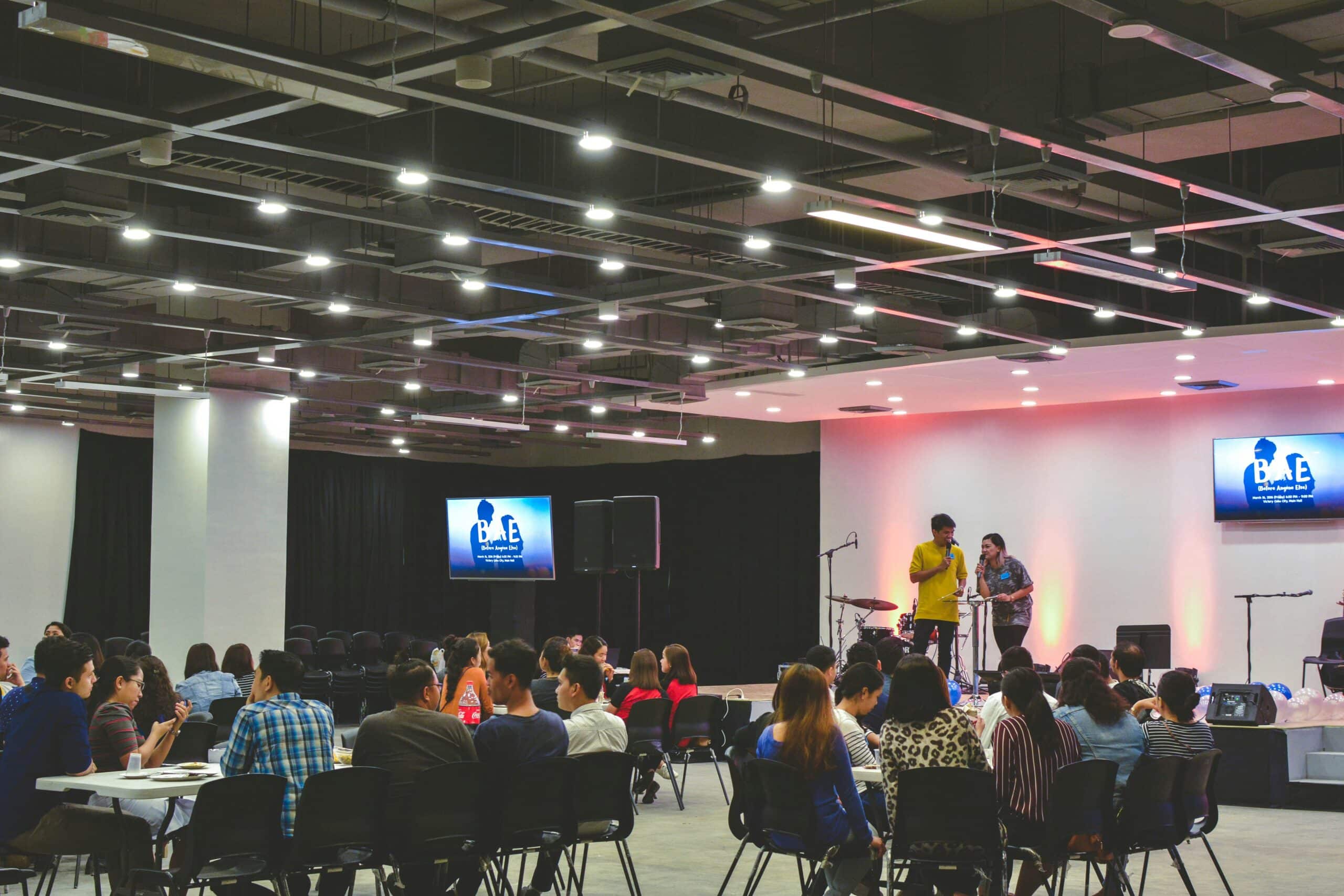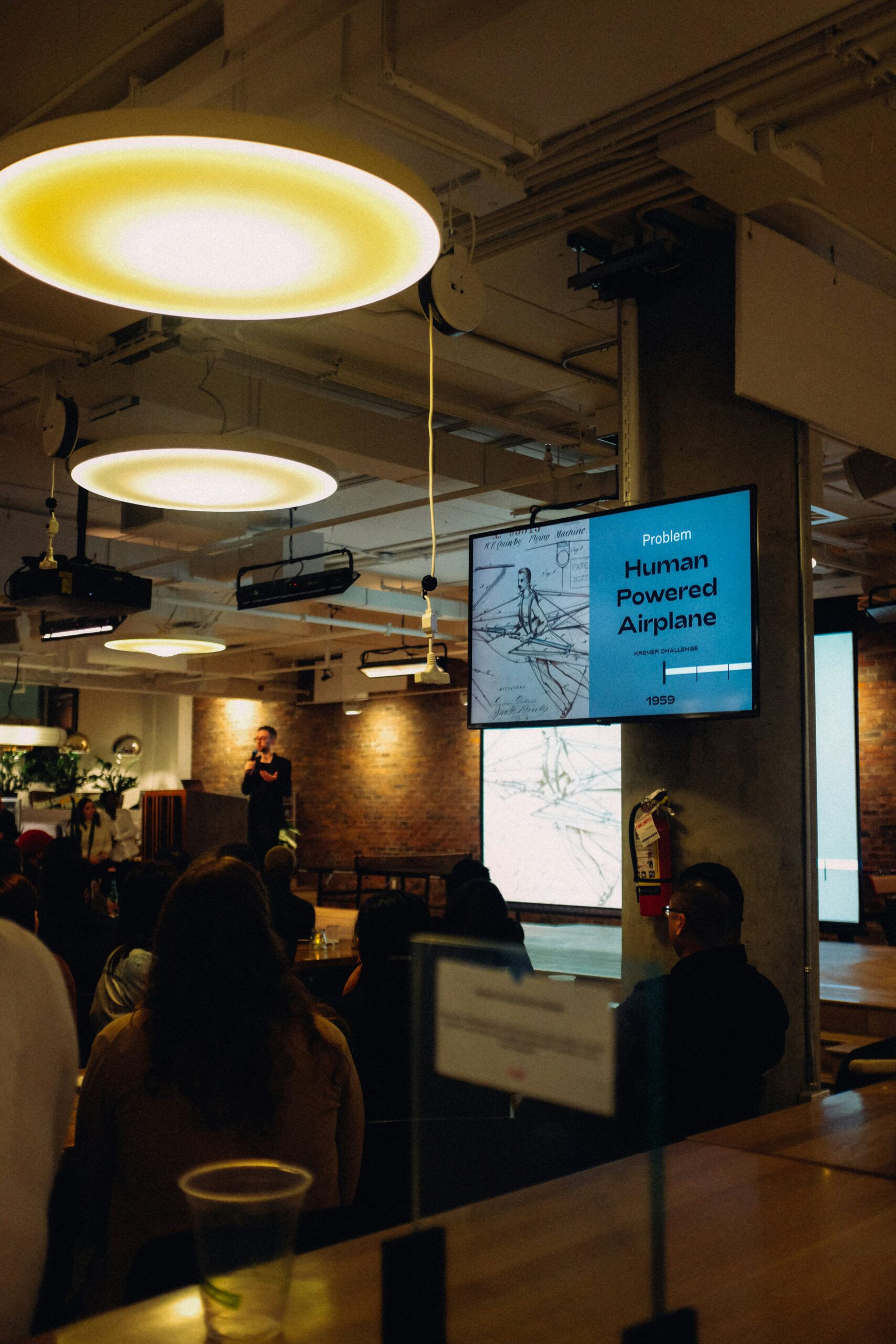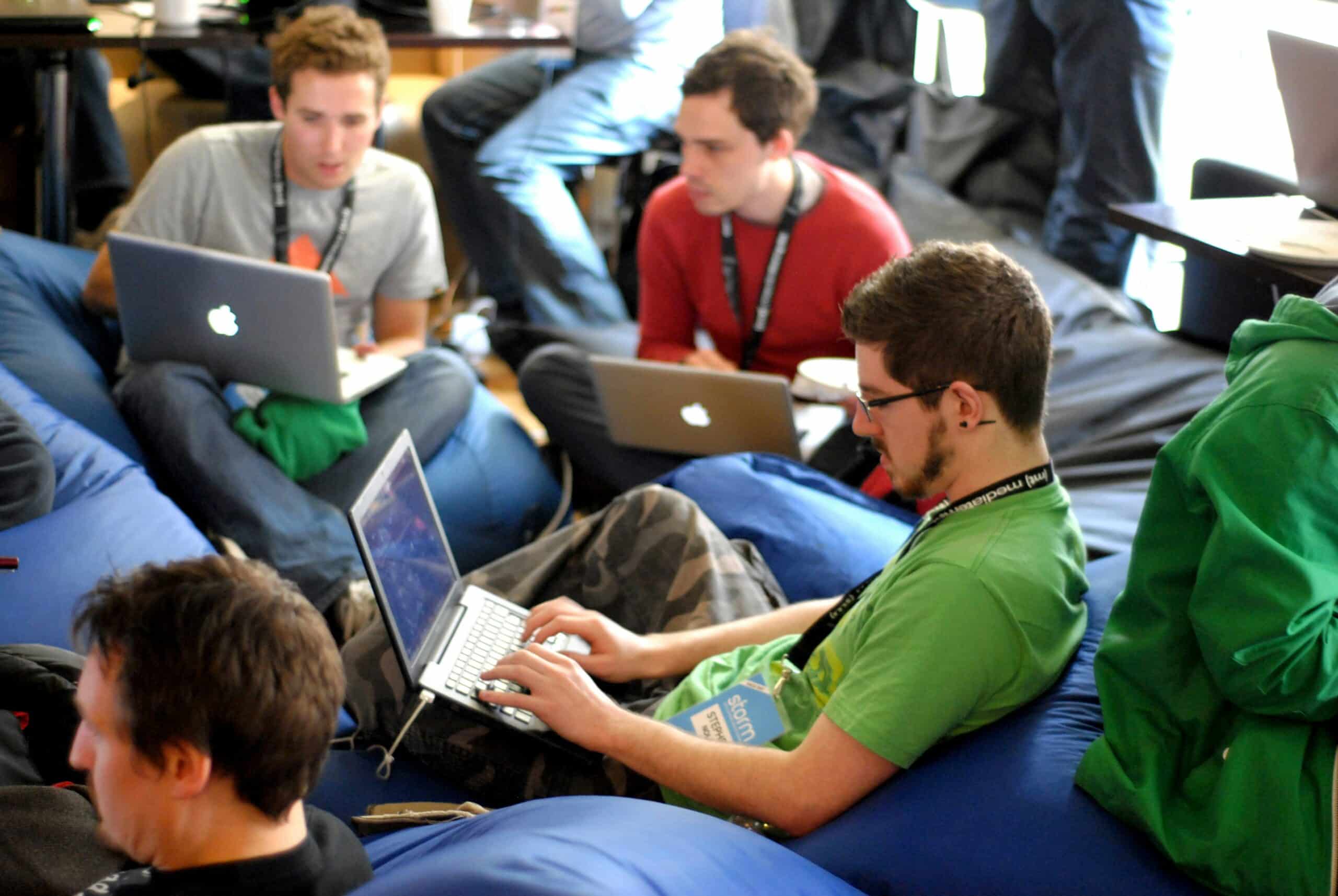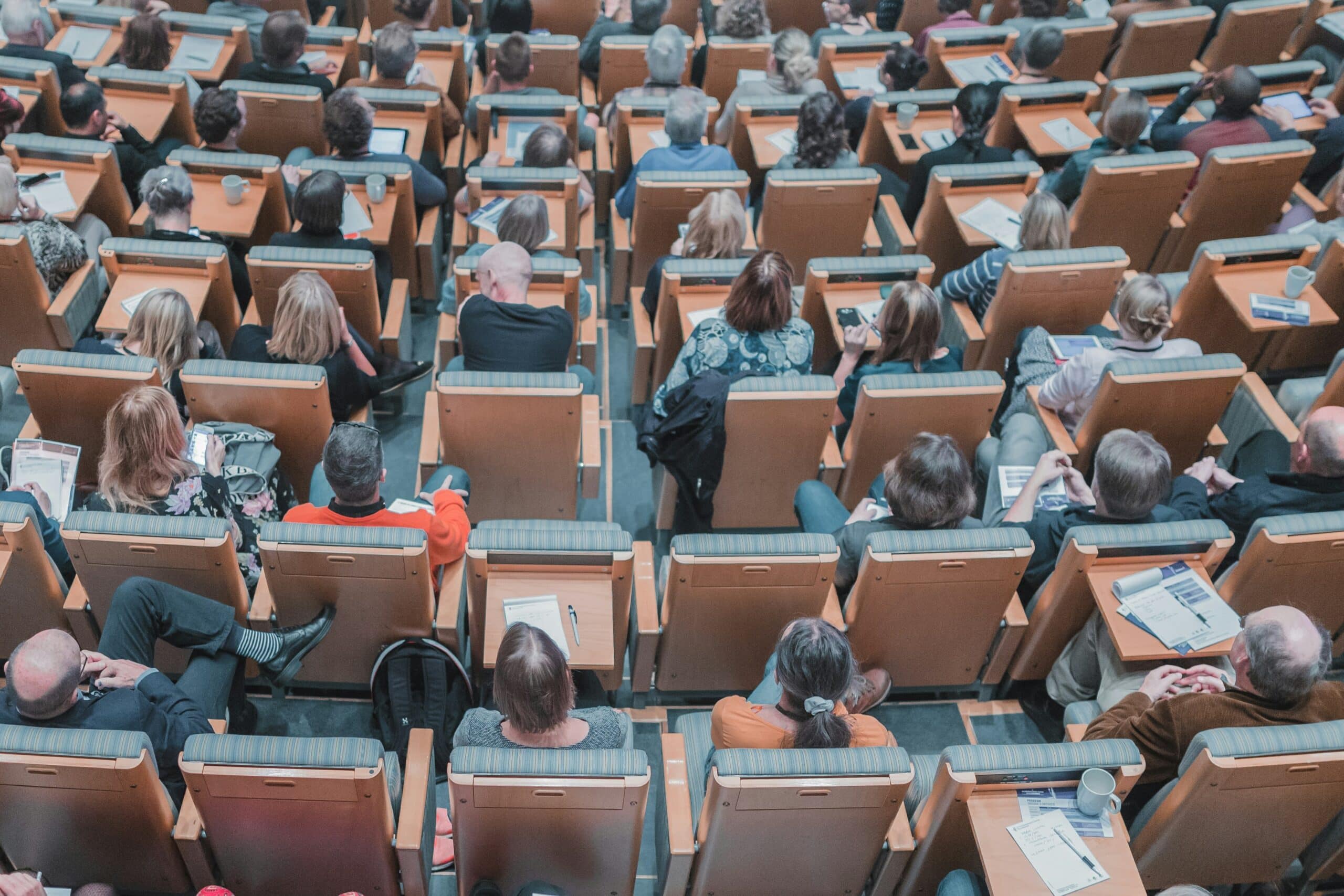Planning a conference? The right rental items can make or break your event. From audio-visual equipment to comfortable seating, this guide covers the essentials to move your conference from ordinary to extraordinary. We’ll explore how to select the best equipment to engage your audience, furnish your venue effectively, and streamline registration. By focusing on these key areas, you’ll create a professional atmosphere that impresses attendees and keeps them coming back. Let’s dive into the must-have rentals to help you host a successful conference.
Key Takeaways
- Proper audio-visual equipment is essential for engaging conference attendees and ensuring smooth presentations
- Comfortable seating and well-planned layouts contribute significantly to attendee satisfaction and event success
- Professional lighting and staging enhance the conference ambiance and create memorable experiences for participants
- Efficient check-in systems streamline registration processes and improve overall attendee experience
- Reliable connectivity and on-site technical support are crucial for successful conference execution
Selecting Audio-Visual Equipment to Engage Your Audience

Selecting the right audio-visual equipment is crucial for engaging conference attendees. This section covers assessing technical needs, choosing microphones and sound systems, incorporating projectors and displays, enhancing presentations with interactive tools, and planning for technical support. By addressing these aspects, organizers can ensure smooth data transmission and clear audio, enhancing the overall event experience without unexpected fees or technical issues.
Assessing Your Event’s Technical Requirements
Assessing an event’s technical requirements involves evaluating the venue’s existing amenities and determining additional audio-visual needs. Event planners should consider factors such as room size, audience capacity, and presentation formats to select appropriate equipment. This assessment helps ensure that essential items like microphones, projectors, and surge protectors are available while also accounting for attendee comfort with proper seating and wardrobe options. A thorough evaluation allows organizers to create a comprehensive equipment list, including often overlooked items such as snack stations or menu displays, to enhance the overall conference experience:
- Analyze venue layout and existing infrastructure
- Determine audience size and seating requirements
- Identify presentation formats and corresponding AV needs
- Consider attendee comfort and convenience amenities
- Create a detailed equipment checklist
Choosing the Right Microphones and Sound Systems
Selecting appropriate microphones and sound systems is crucial for enhancing the conference guest experience. The right audio equipment ensures clear communication, allowing speakers to engage effectively with their audience. Event organizers should consider various microphone types, such as handheld, lapel, or podium mics, based on the presentation style and venue acoustics. A well-designed sound system complements the chosen microphones, providing balanced audio coverage throughout the space and integrating seamlessly with other AV equipment and furniture setups.
Incorporating Projectors and Display Screens
Projectors and display screens are essential for presenting visual content at conferences. Event organizers should consider factors like room size, audience capacity, and presentation format when selecting these devices. High-quality projectors with sufficient lumens and compatible screens ensure clear visibility for all attendees. For larger venues, multiple screens or video walls may be necessary. Organizers should also plan for proper computer connectivity, internet access, and management of payment systems to facilitate seamless presentations and interactions:
Enhancing Presentations With Interactive Tools
Interactive tools enhance conference presentations by engaging attendees and promoting active participation. Event organizers can rent digital whiteboards, audience response systems, and touchscreen displays to facilitate dynamic interactions. These tools allow presenters to collect real-time feedback, conduct polls, and showcase interactive content, creating a more immersive learning experience. When selecting interactive equipment, consider compatibility with existing AV systems and ensure proper setup to avoid technical issues during presentations:
- Digital whiteboards for collaborative brainstorming
- Audience response systems for real-time polling
- Touchscreen displays for interactive demonstrations
- Virtual reality headsets for immersive experiences
- Live streaming equipment for remote audience engagement
Planning for Technical Support and Setup
Planning for technical support and setup is crucial for seamless conference execution. Event organizers should arrange for skilled technicians to handle equipment installation, testing, and troubleshooting. This ensures that all audio-visual components, from microphones to projectors, function properly. While catering and food storage are essential aspects of event planning, prioritizing technical support helps prevent disruptions that could impact attendee engagement and overall event success.
Furnishing the Venue With Comfortable Seating and Tables

Furnishing a conference venue requires careful consideration of seating and table arrangements. This section covers determining ideal layouts, ensuring comfort with quality furniture, providing accessible options, including networking areas, and optimizing space with flexible solutions. Proper planning ensures attendees have comfortable seating and adequate surfaces for note-taking, refreshments, and personal items throughout the event.
Determining the Ideal Seating Arrangement
Determining the ideal seating arrangement for a conference involves considering factors such as room layout, event type, and attendee comfort. Organizers should create a checklist that includes seating options, air conditioning requirements, and invoice details for rental items. A well-planned layout ensures proper shopping for furniture and adequate closet space for attendees’ belongings. Event planners should consider the following elements when designing the seating arrangement:
- Room dimensions and capacity
- Presentation style (theater, classroom, roundtable)
- Sight lines to speakers and screens
- Traffic flow for attendee movement
- Accessibility requirements
Ensuring Comfort With Quality Chairs and Tables
Quality chairs and tables are essential for ensuring attendee’s comfort during conferences. Event organizers should select ergonomic seating options that provide adequate support for extended periods, while tables should offer ample space for note-taking and personal items. When considering rentals, planners may opt for tables with built-in power outlets for charging devices, enhancing the overall experience. While factors like soap dispensers in restrooms and automated check-in systems contribute to attendee satisfaction, comfortable seating remains a top priority for successful events.
Providing Accessible Options for All Attendees
Event organizers must provide accessible seating options for all attendees, including those with disabilities or service animals. This involves ensuring adequate space between tables and chairs, proper lighting for visibility, and easy access to bathrooms. Planners should also consider insurance coverage for any potential accessibility-related issues, creating an inclusive environment that accommodates diverse needs.
Including Lounge Areas for Networking
Including lounge areas for networking at conferences provides attendees with comfortable spaces to connect and relax between sessions. These areas can feature eco-friendly elements like recycling stations and water bottle refill points, aligning with sustainability goals. Organizers should ensure proper electricity access for charging devices and adjust thermostats for optimal comfort. Incorporating Airbnb essentials like cozy seating and ambient lighting can create a welcoming atmosphere that encourages interaction and knowledge sharing among participants.
Optimizing Space With Flexible Furniture Solutions
Flexible furniture solutions optimize conference space by adapting to various layouts and needs. Organizers can rent lightweight chairs and folding tables that transform from a formal seating arrangement to a casual cocktail setup. This versatility allows for quick transitions between sessions, accommodating activities like paper presentations or informal hot chocolate breaks. By choosing multi-functional pieces, event planners can maximize space usage and create dynamic environments that enhance attendee engagement and employment networking opportunities.
Enhancing Ambiance With Professional Lighting and Staging

Professional lighting and staging enhance the conference ambiance. This section covers selecting lighting solutions, setting up stages, creating visual impact with backdrops, utilizing special effects, and ensuring safe installation. These elements transform venues, creating memorable experiences for attendees. While unrelated to toilets or bicycles, proper lighting and staging are as essential to conferences as mirrors and bottles are to Airbnb kitchens.
Selecting Lighting Solutions to Match Your Theme
Selecting lighting solutions that match the conference theme enhances the overall ambiance and attendee experience. Event organizers should consider adjustable LED fixtures that can be programmed to display theme colors, creating a cohesive visual environment. These versatile lights can illuminate key areas such as stages, information booths, and accessibility points, ensuring clear visibility and navigation throughout the venue. Organizers should also plan for adequate power strips to support the lighting setup while incorporating water-saving features in restrooms to align with sustainability goals. Adding themed accent lighting to pillow-filled lounge areas can create inviting spaces for networking and relaxation between sessions.
Setting Up Staging for Speakers and Performances
Setting up staging for speakers and performances requires careful planning to ensure visibility and engagement in the conference room. Event organizers should consider the size of the stage based on the number of speakers and any planned performances, ensuring it fits comfortably within the venue while allowing for proper audience viewing angles. The stage setup should include essential elements like podiums, microphones, and monitors, as well as any necessary cooking equipment for culinary demonstrations. Proper staging enhances the overall business atmosphere and supports the residence hall association’s goals for a professional event experience.
Creating Visual Impact With Backdrops and Decor
Backdrops and decor create visual impact at conferences, enhancing the overall ambiance and branding. Event organizers can rent affordable backdrop services to transform tent spaces into professional settings. These elements not only provide a cohesive look but also serve as ideal photo opportunities, potentially increasing social media exposure and income for the event. When selecting decor, planners should consider incorporating drink stations that align with the theme, further enhancing the attendee experience:
- Custom-printed step-and-repeat backdrops
- Thematic banners and signage
- LED walls for dynamic visual displays
- Fabric draping to soften venue aesthetics
- Branded table runners and centerpieces
Utilizing Special Effects for Memorable Experiences
Special effects enhance conference experiences, creating memorable moments for attendees. Event organizers can utilize fog machines to add atmosphere, while laser displays create dynamic visual elements. These effects, combined with proper lighting, transform ordinary venues into immersive environments. Organizers should consider power requirements for these effects, ensuring enough outlets are available. While unrelated to conference planning, items like kettles for heating water or chocolate for refreshments contribute to attendee comfort, enhancing the overall experience alongside the visual spectacle.
Ensuring Safety With Professional Installation
Professional installation of lighting and staging equipment ensures safety at conferences while maximizing revenue potential. Trained technicians properly secure fixtures, reducing risks associated with falling objects or electrical hazards. They also efficiently manage power distribution, preventing overloads that could damage equipment or interrupt the event. While unrelated to the main topic, organizers should also consider providing microwave access for attendees, stocking disinfectant and paper towels in restrooms, and offering on-site laundry services for extended conferences to enhance overall attendee comfort and satisfaction.
Streamlining Registration With Effective Check-in Systems

Effective check-in systems streamline conference registration, enhancing the attendee experience. This section covers digital platforms, self-service kiosks, on-site badge printing, queue management, and staffed stations. These tools optimize the registration process, reducing wait times and improving efficiency. While unrelated to conference planning, items like refrigerators for meal storage contribute to overall event comfort.
Implementing Digital Registration Platforms
Digital registration platforms streamline conference check-in processes, reducing wait times and improving attendee satisfaction. Event organizers can rent tablets or laptops preloaded with registration software, allowing for quick and efficient processing of attendee information. These platforms often include features like QR code scanning and real-time database updates, ensuring accurate attendance tracking. While unrelated to conference registration, organizers may consider providing a kitchen area with basic amenities for staff and volunteers managing the check-in process.
Renting Kiosks for Self-Service Check-In
Self-service check-in kiosks streamline the registration process for conference attendees. Event organizers can rent these user-friendly devices to reduce wait times and minimize staff requirements. The kiosks typically feature touchscreens, barcode scanners, and badge printers, allowing attendees to quickly verify their information and receive their credentials without assistance.
Providing On-Site Badge Printing Facilities
On-site badge printing facilities offer conference organizers the flexibility to produce professional-quality name tags and credentials in real time. These systems typically include high-speed printers, durable badge stock, and software for customizing badge designs. By providing this service, event planners can accommodate last-minute registrations, make quick corrections, and ensure all attendees have proper identification throughout the conference.
Managing Crowds With Queue Systems
Queue management systems help conference organizers control crowds and reduce wait times during registration. These systems often include retractable belt stanchions, digital displays showing estimated wait times, and mobile alerts to notify attendees when it’s their turn to check-in. By implementing an efficient queue system, event planners can improve the overall attendee experience and reduce the frustration associated with long lines:
Offering Support With Staffed Check-in Stations
Staffed check-in stations provide personalized support for conference attendees who require assistance or have special needs. Event organizers can rent equipment such as computers, printers, and barcode scanners to equip these stations efficiently. Trained staff members help with various tasks, including troubleshooting registration issues, answering questions, and directing attendees to appropriate areas. This human touch enhances the overall check-in experience and ensures that all participants feel welcomed and supported from the moment they arrive at the conference:
- Rent computers and printers for staff use
- Provide barcode scanners for quick check-ins
- Train staff on registration software and procedures
- Offer multilingual support if needed
- Create a designated area for complex inquiries
Ensuring Connectivity With Reliable Wi-Fi and Communication Tools

Reliable connectivity is crucial for successful conferences. This section covers arranging high-speed internet access, setting up charging stations, providing event apps for audience engagement, facilitating communication with two-way radios, and planning for on-site technical support. These elements ensure seamless connectivity and enhance the attendee experience throughout the event.
Arranging High-Speed Internet Access
Event organizers must arrange high-speed internet access to ensure seamless connectivity for conference attendees. They should work with the venue or a third-party provider to set up a robust Wi-Fi network capable of handling multiple simultaneous connections. Key considerations include bandwidth capacity, coverage area, and security measures to protect sensitive data. A well-planned internet infrastructure supports various conference activities, from presentations to online networking:
- Assess bandwidth requirements based on attendee numbers
- Install multiple access points for comprehensive coverage
- Implement network security protocols
- Provide separate networks for staff and attendees
- Set up a dedicated support team for troubleshooting
Setting Up Charging Stations for Devices
Setting up device charging stations is essential for keeping conference attendees connected throughout the event. Organizers should rent charging lockers or tables equipped with multiple outlets and USB ports to accommodate various device types. These stations should be strategically placed in high-traffic areas, such as near session rooms or in designated networking spaces. To enhance user experience, organizers can provide short charging cables and consider offering portable power banks for rent:
- Charging lockers with secure compartments
- Multi-device charging tables
- High-capacity power strips
- Portable power banks for rent
- Signage directing attendees to charging areas
Providing Audience Engagement With Event Apps
Event apps enhance conference audience engagement by providing interactive features and real-time information. Organizers can rent tablets preloaded with custom event apps, allowing attendees to access schedules, session details, and networking opportunities. These apps often include features like live polling, Q&A sessions, and personalized agendas, creating a more dynamic and participatory conference experience.
Facilitating Communication With Two-Way Radios
Two-way radios facilitate efficient communication among event staff during conferences. Organizers can rent these devices to ensure quick and reliable coordination between team members, security personnel, and technical support. Two-way radios provide instant communication, even in areas with poor cell phone reception, enabling staff to respond promptly to attendee needs and manage any issues that arise during the event.
Planning for Technical Support on-Site
On-site technical support is crucial for addressing connectivity issues and ensuring smooth conference operations. Event organizers should arrange for skilled technicians to be present throughout the event, equipped with the necessary tools and spare equipment. These professionals can quickly troubleshoot Wi-Fi problems, assist with device connections, and manage audiovisual equipment, minimizing disruptions to presentations and networking activities. A well-prepared technical support team enhances the overall attendee experience and contributes to the event’s success:
Catering Equipment and Supplies to Delight Attendees

Catering equipment and supplies are crucial for conference success. This section covers selecting serving ware, renting beverage machines, setting up food stations, coordinating with staff, and maintaining hygiene. These elements ensure attendees enjoy high-quality refreshments throughout the event, enhancing their overall experience.
Selecting Appropriate Serving Ware and Utensils
Selecting appropriate serving ware and utensils is crucial for a successful conference catering experience. Event organizers should choose durable, high-quality items that match the event’s theme and meet the specific needs of the menu. For formal gatherings, elegant china and silverware create a sophisticated atmosphere, while eco-friendly disposable options work well for casual events or large-scale conferences. Organizers must also consider the practicality of the serving ware, ensuring it is suitable for the types of food and beverages being offered and easy for attendees to use.
Renting Coffee Machines and Beverage Dispensers
Renting coffee machines and beverage dispensers is essential for keeping conference attendees refreshed throughout the event. Organizers should select equipment that can handle high-volume demands, such as commercial-grade coffee makers and large-capacity water dispensers. These rentals ensure a steady supply of hot and cold beverages, catering to various preferences and dietary needs. By providing quality drink options, event planners enhance attendees’ satisfaction and create opportunities for informal networking during breaks.
Setting Up Food Stations and Buffets
Setting up food stations and buffets requires careful planning and the right equipment to ensure efficient service and food safety. Event organizers should rent chafing dishes, hot plates, and serving utensils to keep food at proper temperatures and easily accessible. Cold food stations may need ice baths or refrigerated displays. Organizers must also consider traffic flow when arranging stations to prevent congestion and long lines. Here’s a breakdown of essential items for food stations and buffets:
Coordinating With Catering Staff and Suppliers
Effective coordination with catering staff and suppliers is crucial for seamless conference execution. Event organizers should establish clear communication channels with the catering team, discussing menu options, dietary restrictions, and service schedules well in advance. They should also work closely with equipment rental companies to ensure timely delivery and setup of necessary items such as tables, linens, and serving ware. Regular check-ins and a detailed timeline help prevent last-minute issues and ensure all catering needs are met throughout the event.
Maintaining Hygiene With Sanitation Equipment
Maintaining hygiene with sanitation equipment is crucial for conference catering. Event organizers should rent hand sanitizer stations, place them strategically throughout the venue, and provide disposable gloves for food handlers. They must also ensure proper cleaning supplies are available for frequent surface disinfection, especially in high-touch areas around food stations. By prioritizing sanitation, organizers create a safe environment for attendees and comply with health regulations.
Conclusion
Essential conference rental items are crucial in creating successful events by enhancing the attendee experience and facilitating smooth operations. From audio-visual equipment and comfortable seating to professional lighting and efficient registration systems, these rentals contribute to a polished and engaging atmosphere. Reliable connectivity solutions and well-planned catering equipment further ensure that attendees remain connected and satisfied throughout the conference. By carefully selecting and coordinating these essential items, event organizers can create memorable experiences that leave a lasting impression on participants and contribute to the overall success of their conferences.

